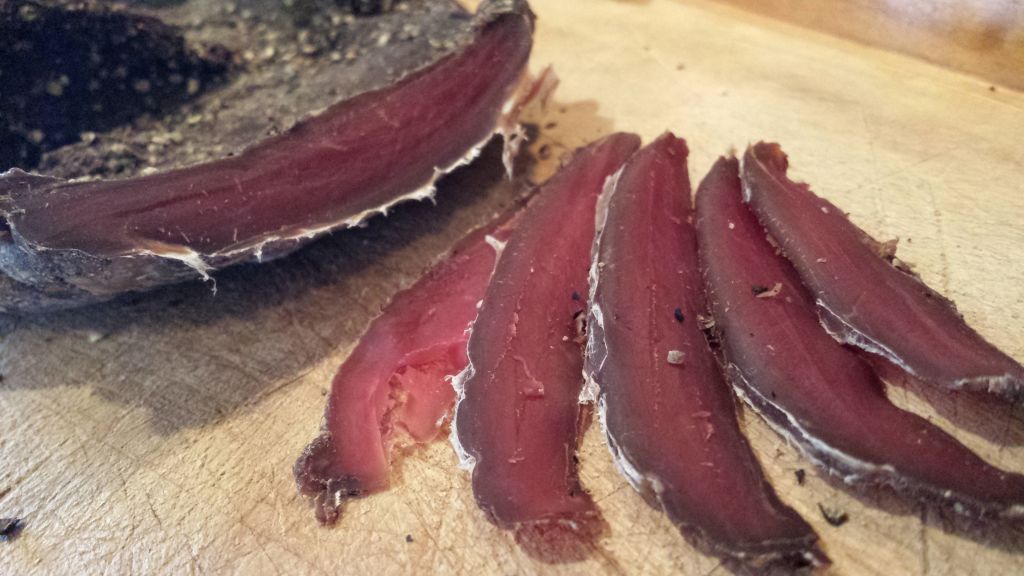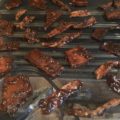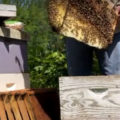
This post has been edited and updated with subsequent pictures and info that I have gleaned over the years.
—
Hunting season means deer hearts are plentiful. It’s common for friends to drop off their hearts to me and tell me to do with them what I may. My original article wrote about curing what’s in season, so the series of posts featured venison. Here, we’re talking deer heart. See also venison landjaeger and venison bresaeola.
All of these products are cured. It requires an environment where you can reliably control temperature and humidity. Once you have the environment, and the basic knowledge of safely curing meat, the recipes are up to your imagination. I’ve added one below.
Now, I always aim for the lung shot to preserve the sacred heart. While I don’t chomp into it during the field dress like some traditions, I do let none go to waste.
I cut my teeth on grilling hearts. Just like your other venison cuts, don’t over-cook it. I figure there’s a window of about 2 minutes that separate just perfect… and ruined. But let me step back a bit. I myself was a hunter who didn’t think they’d ever eat a deer heart. That changed when I saw what the inside of a deer heart looked like. Give it a chance. If you’ve never prepared a heart, harvest it if it’s not all shot up. Take it through the process of cleaning it… you can always toss it, or give it to someone else in the end. However, you might find a new-found passion as I did.
Since I’m curing and drying this heart, here’s what I do. Take your fresh heart, and run clean water through the valves, squeezing and massaging any clots out. Empty the water and refill, repeating the process a couple times. It’s OK to leave the heart soaking in salt water for several days in the fridge until you can make it around to it if you need to. I prepare a salty brine to soak it. When the water becomes bloody dump it and change out. A few changes, and it’ll be clear. When ready, cut it open in a manner that leaves the heart lay flat and in one piece. I plan to roll and truss the heart later when I go to dry it. The inside of a heart is… empty, with white fibrous webbing (or strings) that operate the chambers and valves. Trim this webbing out as best as you can until the heart looks like the pictures below. Give it another rinse and prepare your spice mix.

I make subtle variations in the spice mixes each time… making notes so that when I hit a grand slam, I can come back to it. I have rolled tight like a pancetta, and cased it in a beef middle (sometimes, I’ll cut hearts in to two pieces to do this,) and then truss it. I’ve also rolled up and netted. Here is a spice mix idea.
To a 350-450g heart (average weight of whitetail hearts I’ve cured)
- 15g kosher salt
- 2g pink salt #2
- 7g brown sugar
- 1/4 tsp. dry thyme
- 1/2 tsp. crushed black pepper
- 1 tsp. caraway seed
- 1 tsp. dried crushed jalapeno powder
- 1/4 tsp. paprika
- 1 tsp. fresh crushed garlic

In another variation, I omitted the garlic and brown sugar, and crushed 1 tsp. of juniper berries. I also substituted the jalapeno powder for habanero powder.
Just like all other cure jobs, massage the spice mix into the heart and put into a zip-lock, or a vac bag making sure to get all the spice mix in with it, including any spice mix left in whatever you mixed it in. We want to make sure to get the proper amount of pink salt in the bag. Now seal it up, and put it in the fridge. Leave it for 8-10 days and flip it over every other day.
Once done, remove from the bag and rinse off the cure. You can use water… or wine. I rinsed one of them with wine. Now, cold smoke if you like for 2-3 hours, remove, and put into your dryer. Here again, watch for case hardening. Spritz as you need, and make sure you environment has 70-80% RH. It should take around 3-4 weeks to fully dry. Don’t rush this process… or you will dry the outside too fast and trap water content inside. The idea is to keep the outside soft and pliable during the drying process. You are looking for approximately 30% weight loss.






























[…] we’re talking venison landjaeger. See also, cured deer heart, and venison […]